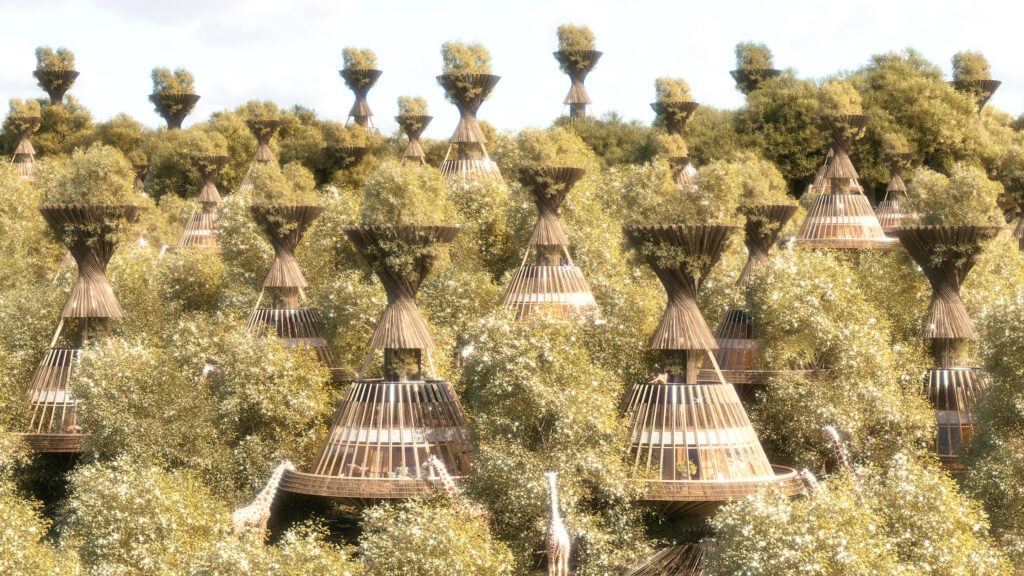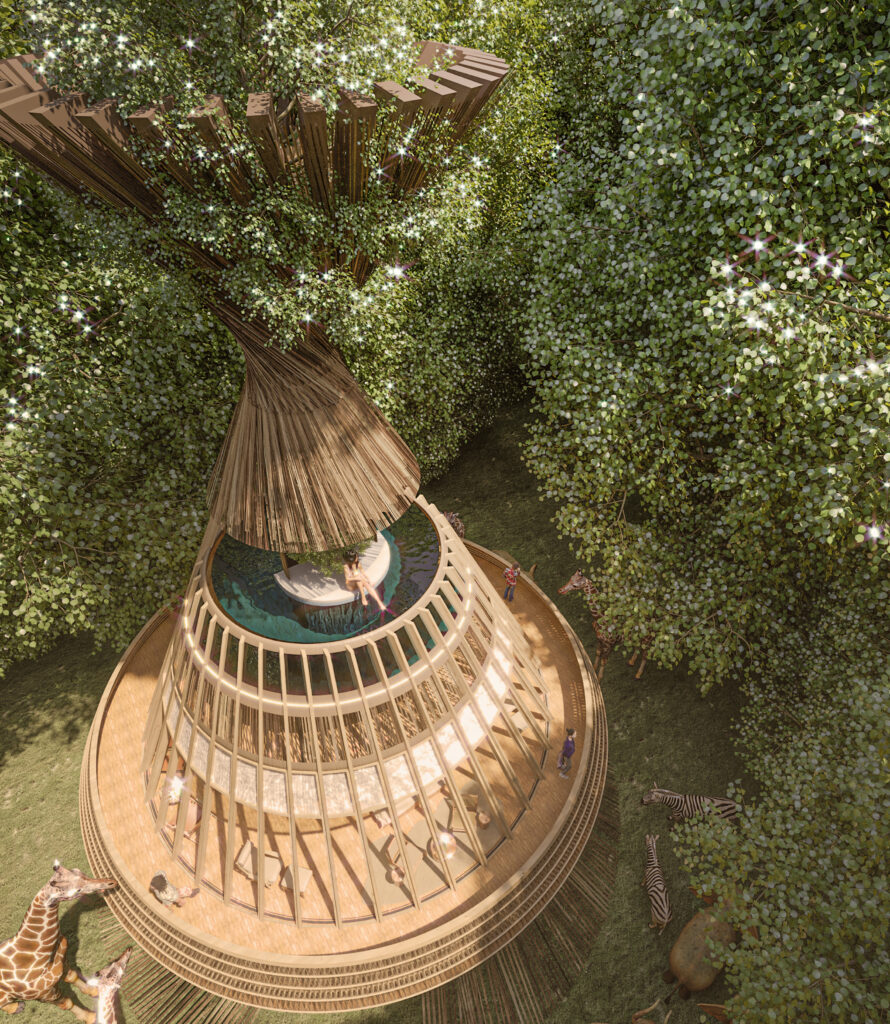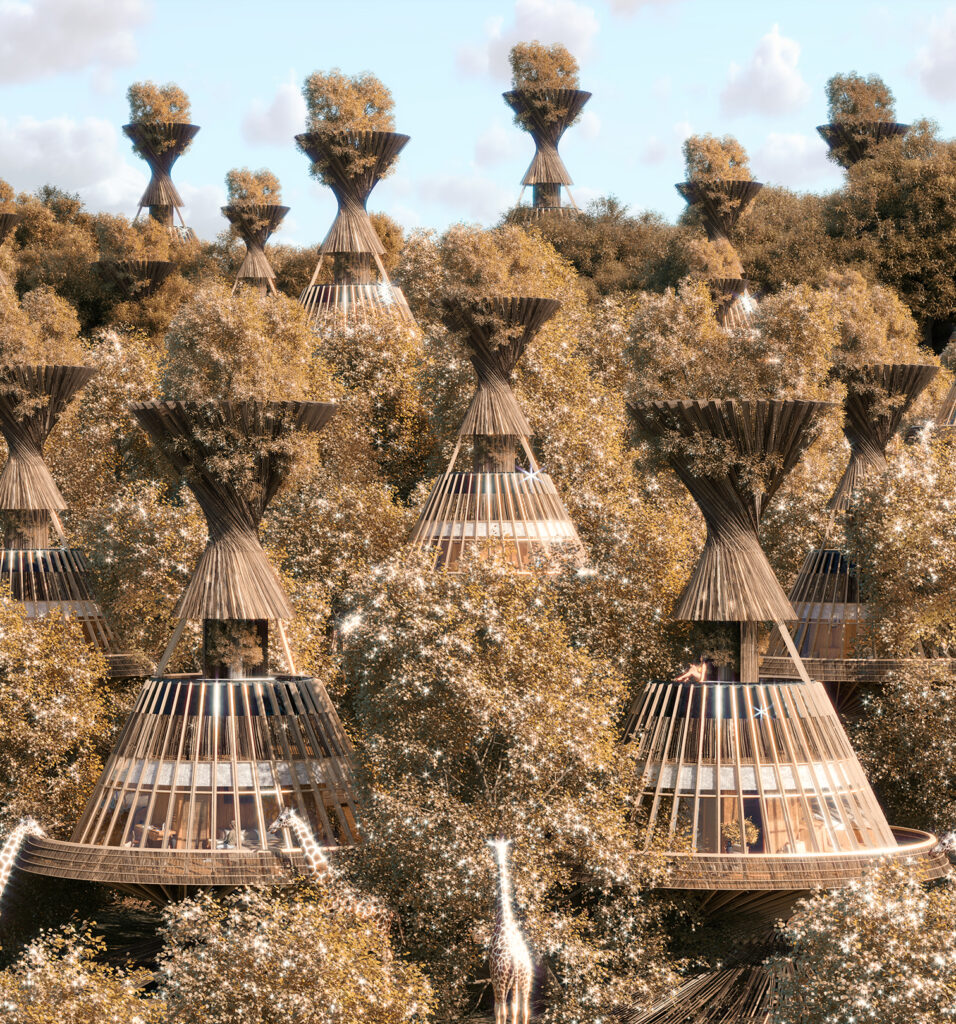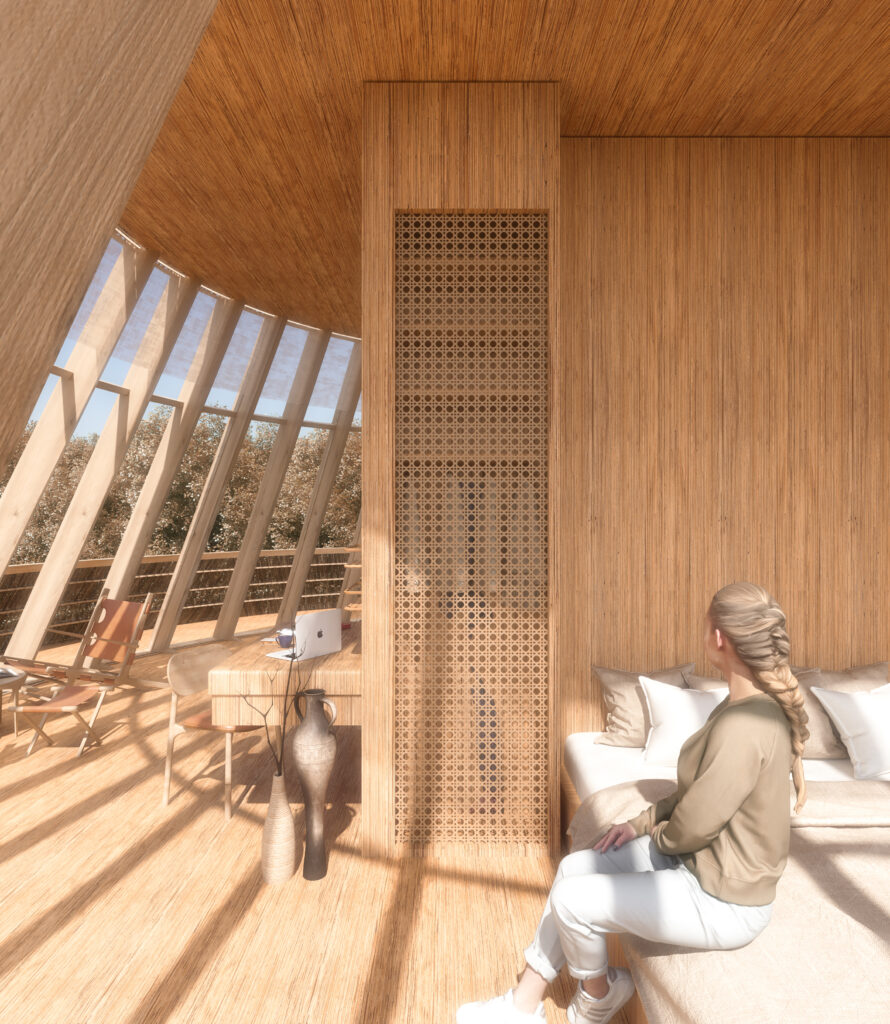The river was cold and the current strong….
As the wind swept through, a silhouette of baobab trees appeared. As she flowed in, was stunned at how such luxurious experience could be achieved within nature’s comfort. Yes, Mask Architects has made it possible by bringing luxury into the lap of nature with the world’s first Eco-Tourism based BAOBAB Luxury Safari Resort in Africa, where the water is generated by a transparent solar device hidden in curtain glass utilizing ‘Air to Water’ technology.
In addition to producing its own water autonomously through ‘Air to Water technology’, which is powered by transparent solar devices covered by curtain glass, it can also be used as a working holiday for people.
Offering a luxurious and unique experience to users, Africa’s drought-stricken people will benefit from the autonomously produced water network.
-Ar.Danilo Petta

Does sustainability get any better than this? Well no, Staring down, she saw the lodges were raised 3.5 meters off the ground to create a secure living safe zone. The experience of feeling up and above and meeting the tree line echoes the whole concept of creating those safari lodges within the wildlife. Instead of having the pool on the ground floor, there was a pool on the top floor at a high level to enhance the experience and provide a breathtaking view of the safari zone. Also, there was a lower balcony that allowed an experience to interact with the wildlife that surrounds the settlements allowing users to enjoy the interaction and feed the wildlife.

At the center of the building was the staircase that led to different levels of the lodge in addition to the pump that pumped water up and drained water from the pool. Wooden materials have been used for the exterior structure, and 40 structural pillars support the floors and house transparency glass or light-weight materials between them. An internal foldable blind system was incorporated that would provide privacy when needed and cooling when the temperature reaches high levels.
The lodge ideally has been designed to house areas for living space and could also be used for couples, small families or large groups. There were areas for luggage and clothing storage, a small bespoke bar for snacks and drinks, and an internal bathroom with an enclosed toilet, sink, and shower. Also included were a multi-purpose living room, a working area, and a bedroom, as well as a 30 square meter pool and plunge deck area with an outdoor shower. In addition to housing, the lodges could also be used for restaurants, bars, lounges, spas, offices, fitness centers, educational centers, safari park staff facilities, security and watchtower posts, etc. A toughened glass floor has been installed on the balconies surrounding the lodge so the users can have a different perspective on the wildlife below. While the animals below take advantage of the shade, the viewers could view the wildlife from above.

The lodges are nestled in the wildlife, with beachwood exterior styling to create a tropical safari resort development.
-Ar.Oznur Pinar Cer
Then she continued in this manner for another half hour, believing the project would provide environmental awareness, minimize environmental impact by raising funds, and provide direct financial benefits for conservation while consulting stakeholders and the general public. As well as providing financial benefits and power to the local people, it would also generate interest and growth. Furthermore, it will help create democratic movements that are necessary for the future of human rights.
Suddenly, her eye landed on the air filters inside the wooden covered aluminum poles that were parametrically surrounded by the facade of each module, allowing air to enter the linear channels. By integrating the channels into the linear lattice strips structure, the humidity was extracted from the air, which was then filtered, condensed, and then processed in a multi-step filtration system located at+1.50 level in the system room, producing “purified great tasting water”.

Fill with a sea of emotions she flew over the Baobab trees, a prehistoric species which predates both mankind and the splitting of the continents over 200 million years ago. And in a flash, she was gone.


